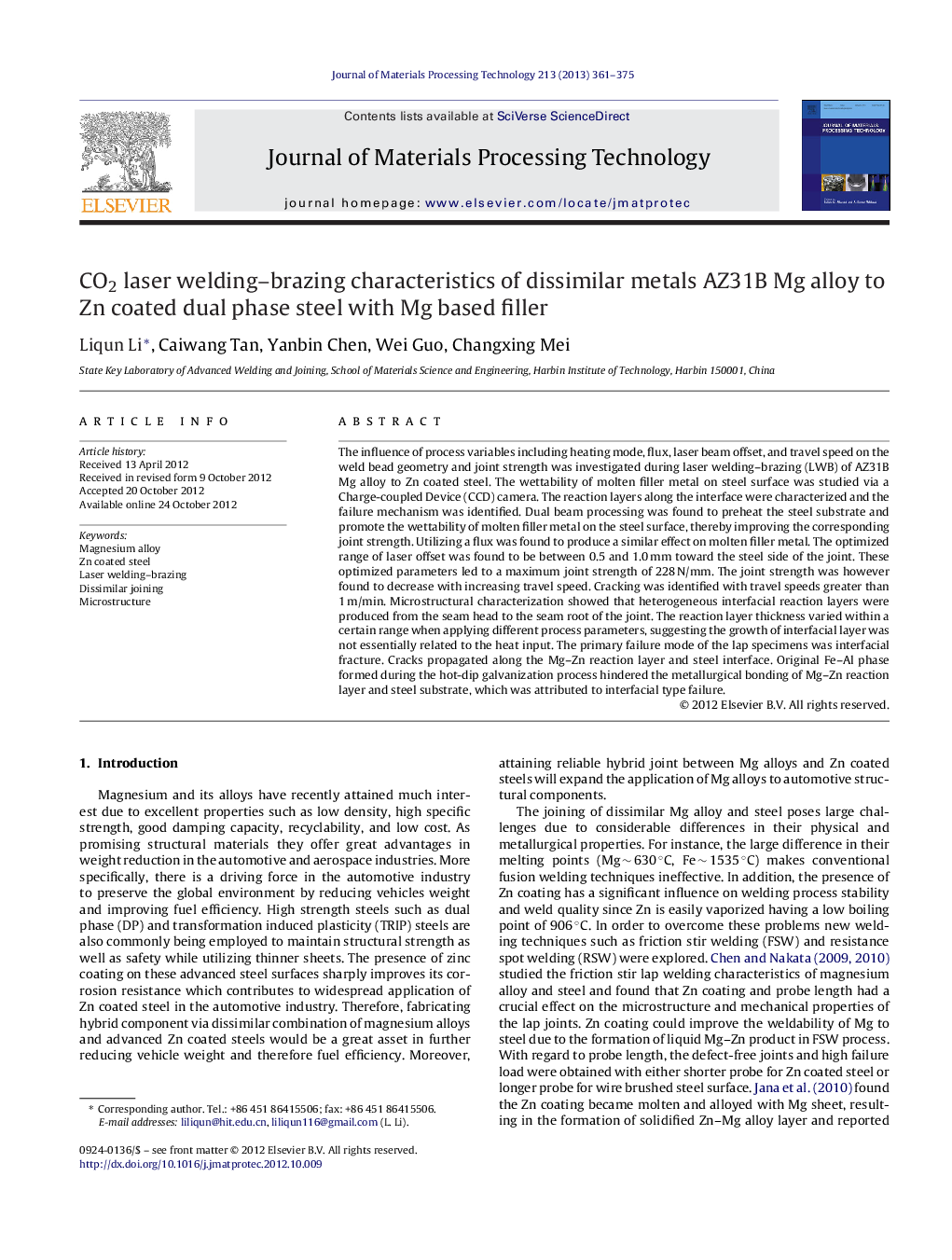| Article ID | Journal | Published Year | Pages | File Type |
|---|---|---|---|---|
| 798133 | Journal of Materials Processing Technology | 2013 | 15 Pages |
The influence of process variables including heating mode, flux, laser beam offset, and travel speed on the weld bead geometry and joint strength was investigated during laser welding–brazing (LWB) of AZ31B Mg alloy to Zn coated steel. The wettability of molten filler metal on steel surface was studied via a Charge-coupled Device (CCD) camera. The reaction layers along the interface were characterized and the failure mechanism was identified. Dual beam processing was found to preheat the steel substrate and promote the wettability of molten filler metal on the steel surface, thereby improving the corresponding joint strength. Utilizing a flux was found to produce a similar effect on molten filler metal. The optimized range of laser offset was found to be between 0.5 and 1.0 mm toward the steel side of the joint. These optimized parameters led to a maximum joint strength of 228 N/mm. The joint strength was however found to decrease with increasing travel speed. Cracking was identified with travel speeds greater than 1 m/min. Microstructural characterization showed that heterogeneous interfacial reaction layers were produced from the seam head to the seam root of the joint. The reaction layer thickness varied within a certain range when applying different process parameters, suggesting the growth of interfacial layer was not essentially related to the heat input. The primary failure mode of the lap specimens was interfacial fracture. Cracks propagated along the Mg–Zn reaction layer and steel interface. Original Fe–Al phase formed during the hot-dip galvanization process hindered the metallurgical bonding of Mg–Zn reaction layer and steel substrate, which was attributed to interfacial type failure.
► Laser welding–brazing of Mg alloy to Zn coated steel with filler was performed. ► Influence of various process variables on appearance and strength was studied. ► Heterogeneous interfacial layers formed along the interface of the joint. ► The thickness of reaction layer was associated with that of original Zn coating. ► Original Fe–Al phase suppressed the bonding of reaction layer and steel.
